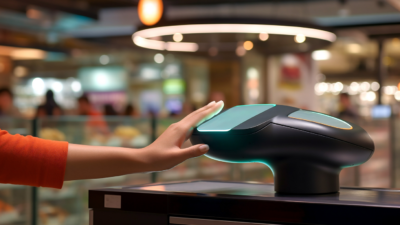We can safely assert that Black Friday has officially transcended beyond its one-day in-store shopping blitz into a full-fledged five-day phenomenon, one that blends the lines between shopping in-store and online. Despite its appearance so late in the year, Black Friday sales skyrocketed, with mobile contributing nearly $3 billion in sales, surpassing most predictions. Here’s what we learned…
Consumers Were Way Ahead of the Shopping Curve
According to Pinterest’s Holiday Shopping Report, more than half of their 61 million users started Christmas shopping searches well in advance of Thanksgiving. In some cases, Pinterest searches for holiday inspiration began to rise as early as July — twice as early as other shoppable platforms, shared Amy Vener, global head of retail strategy and marketing for the social media company. Could it be that consumer confidence about their finances is changing, last year in November 2018, the index was better at 28% compared to this year at 21% and how will it impact the spend in 2020.
In-Store Growth Overshadowed by Online
According to GlobalData, Black Friday spending in store grew by only 0.7% compared to online, which grew 20% (including mobile.) The most notable was grocery sales, which saw a boom in web sales with an increase estimated at 34%. Perhaps I wasn’t the only one who forgot that one ingredient I needed for our pumpkin pie on Thanksgiving Day. But even so, a whopping 42% of the $10.85 billion generated on Black Friday ‘touched’ a store (whether they bought online or they picked up in store), compared with only 10.2% that shopped purely online (ordered and delivered to their home.) So, it is clear that in-store shopping is still a big draw to Black Friday shoppers.
Black Friday Goes Global
In recent years, the Black Friday shopping concept has ventured beyond U.S. brick-and-mortar, splashing on the shores of Europe. On the day of, the “Black Friday” search term ranked in the top five most popular Google searches for Finland, Italy, Spain and the U.K.
Timing Was Everything
Thanksgiving’s late date this year contributed to an onslaught of unexpected shopping by consumers online and in-store, even on the day itself. Black Friday 2019 spend growth has increased since 2010 by 3.7%, however, it’s less than the prior year, which was at 4.7%. We also expect the Christmas 2019 spend to be 4.2% higher from 10 years past but slightly less than last year. A bit of a slowdown may result from a tighter calendar this year and highly competitive retail landscape.
Pre-Sales Go A Long Way (Maybe)
In an attempt to make up for the six-day shopping deficit, L.L. Bean, Kohl’s and a handful of other retailers engaged in pre-sales promotions for the biggest shopping weekend, including leaking their big deal ads well in advance of Black Friday. Luxury brands Michael Kors, Kate Spade and Coach jumped on the bandwagon, slashing prices and offering significant discounts on their merchandise. It’s too soon to gauge how effective these sales strategies are in impacting retailer revenue. However, we do know that the percentage of people doing most of their Black Friday shopping in 2019 was 35% compared to 2010 which was 62%. Ease and convenience of shopping in store or on device has reduced the FOMO that used to accompany lining up at 4 am for that Black Friday sale.
Smart Shopping Goes Mobile
A record $11.6 billion in online sales was pulled in over the holiday weekend, with 20% of those purchases facilitated on smartphones. Smartphone shopping will attribute to almost half of retail holiday growth this year as consumers get increasingly more comfortable using their mobile phones for price-checking and product reviews. This shift in behavior clearly defines mobile as the shopping platform of choice for Black Friday 2019.
For more of my thoughts about Black Friday, check out my recent interview with CoStar News here, and join the conversation by tweeting me @anjeesolankiCRE.
Anjee continues to be an insatiable enthusiast of all things retail. She’s a student of culture with a pulse on future shoppers and the fleeting trends constantly changing the retail landscape … driving retailers, landlords and developers crazy!

 Anjee Solanki
Anjee Solanki


 Nicole Larson
Nicole Larson